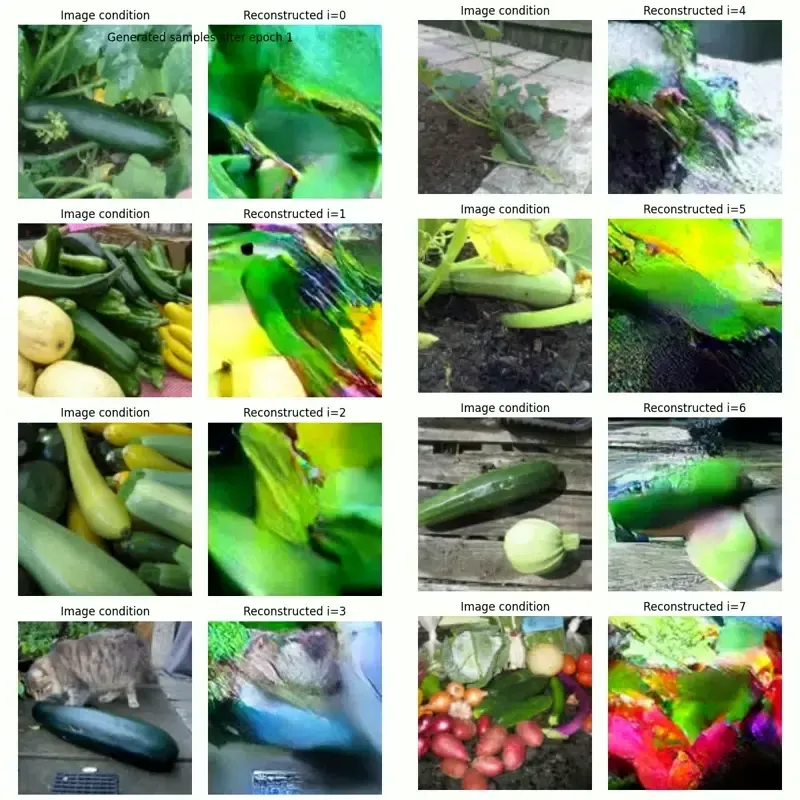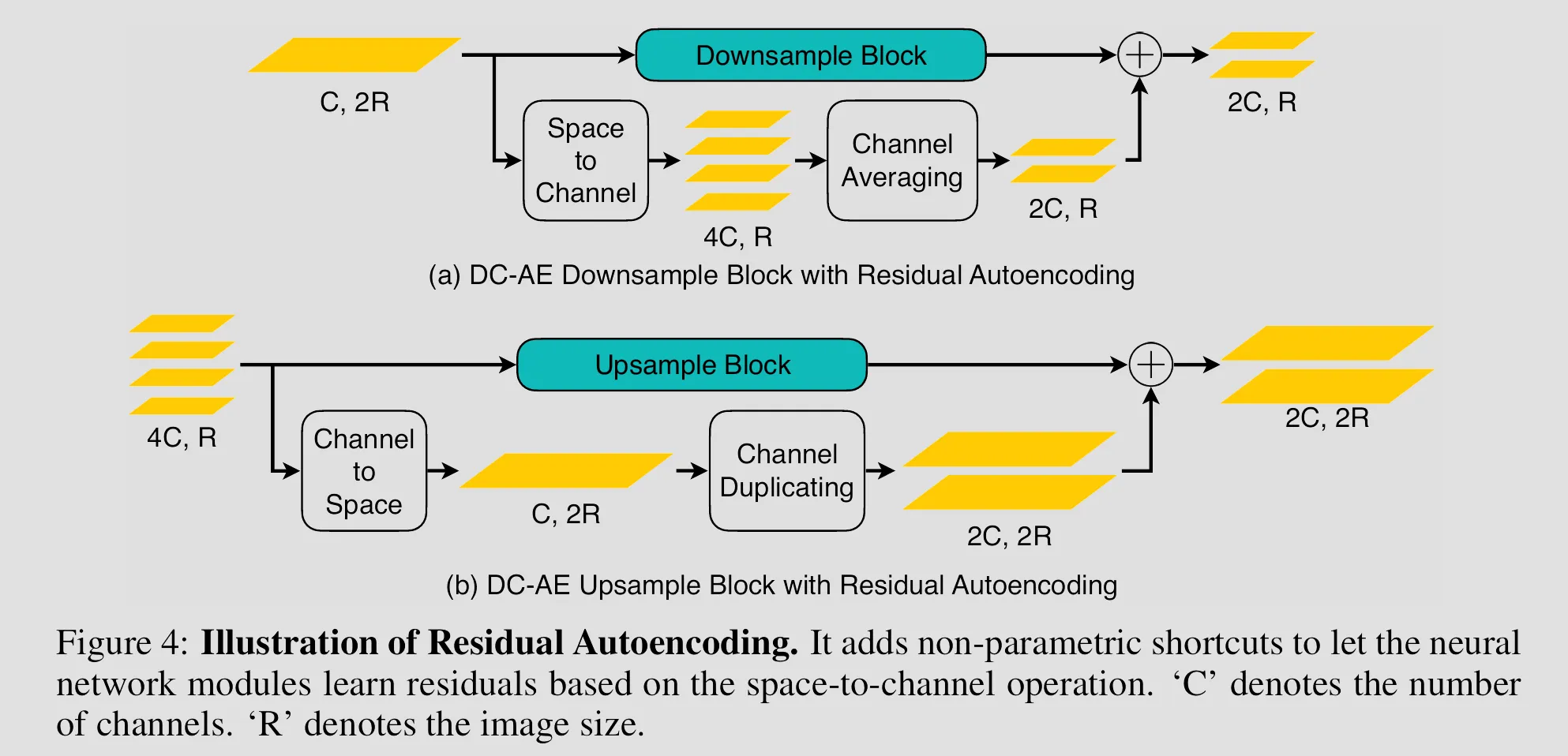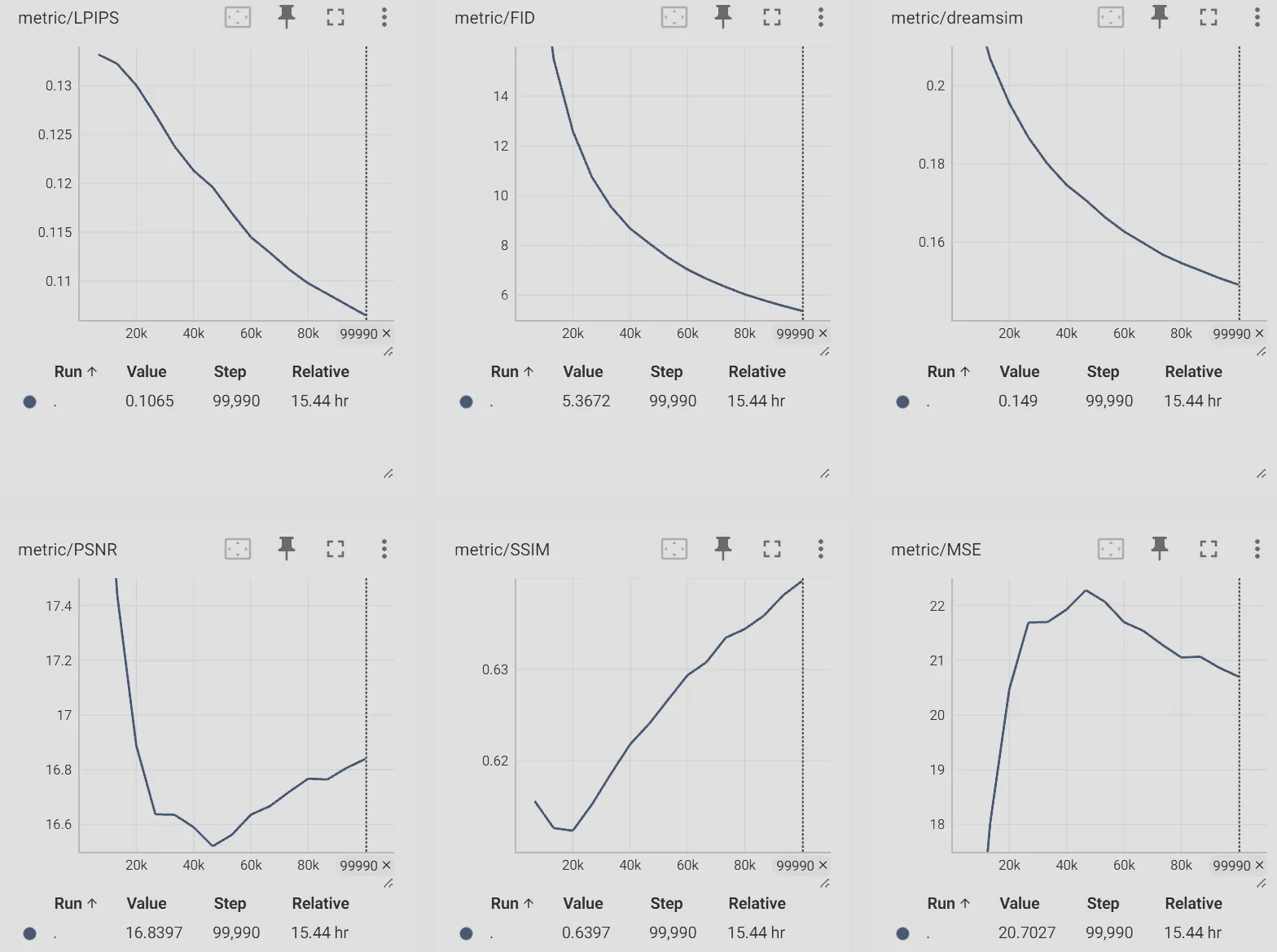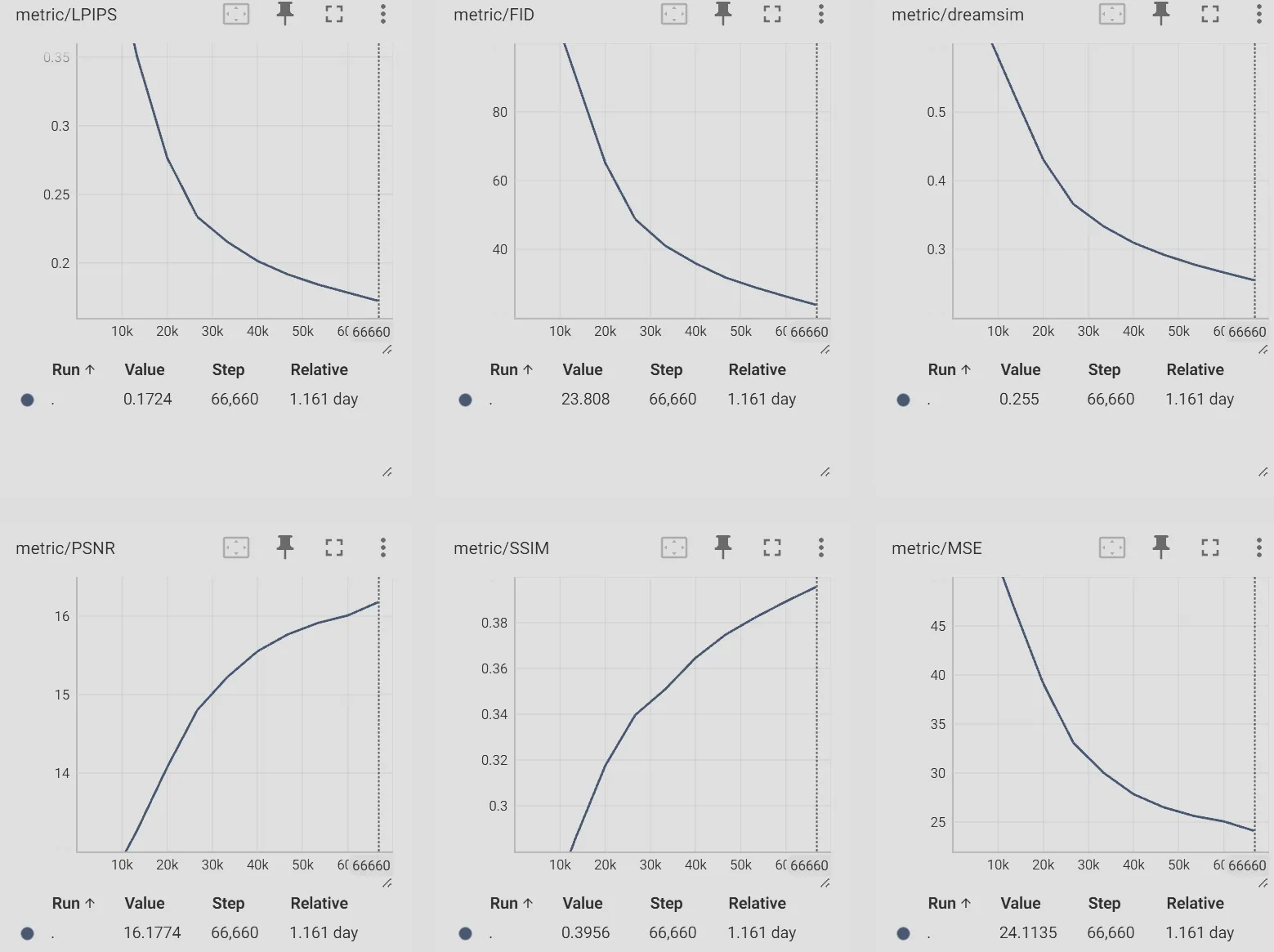
Abstract
We introduce DC-SSDAE, a novel autoencoder framework for efficient high-resolution image generation. By integrating a deep compression encoder for high-ratio spatial reduction, a single-step diffusion decoder for fast reconstruction, and equilibrium matching for stable generative training, DC-SSDAE achieves compact latent representations while preserving perceptual quality. Trained on ImageNet-1K, it replaces flow matching with a time-invariant equilibrium gradient, enabling flexible gradient-descent sampling. This combination addresses optimization challenges in high-compression settings, offering potential speedups in diffusion model pipelines without adversarial losses. The purpose of this project is to prove this architecture can work well among s-o-t-a VAE models, and offers a strong & stable codebase for other VAE researchers to build upon.
Entire codebase is available at:
https://github.com/MrForExample/DC_SSDAE
Experimental results are available at:
https://huggingface.co/MrForExample/DC-SSDAE

1. Introduction
High-resolution generative models, such as diffusion transformers, face computational bottlenecks due to quadratic token complexity. Autoencoders mitigate this by compressing images into latent tokens, but traditional variants like KL-VAE struggle with high compression ratios and multi-step decoding. Recent works have advanced encoder compression and diffusion-based decoders, yet they often rely on time-dependent losses like flow matching, which limit sampling flexibility.
DC-SSDAE unifies these ideas: it adopts a residual-based deep compression encoder to achieve up to 128× spatial reduction, a hybrid U-Net-transformer decoder for single-step efficiency, and equilibrium matching to learn an implicit energy landscape for gradient-based inference. This design enables drop-in replacement in generative pipelines, focusing on ImageNet-1K for evaluation. By discarding time conditioning, DC-SSDAE promotes stable training and adaptive sampling, potentially reducing function evaluations by 60% compared to flow-based alternatives.
2. Related Work
Autoencoders for diffusion models have evolved from VQ-VAE’s discrete tokens to continuous KL-regularized variants, enabling end-to-end training but with limited compression. The Deep Compression Autoencoder (DC-AE) introduces residual shortcuts and decoupled high-resolution adaptation to handle up to 128× compression, using space-to-channel transformations and three-phase training for optimization stability.
Diffusion decoders, as in Single-Step Diffusion Decoder (SSDD), replace Gaussian decoders with U-ViT architectures conditioned via AdaGN, trained on flow matching, LPIPS, and REPA losses for GAN-free reconstruction. Single-step distillation further accelerates inference, achieving 3.8× speedup over KL-VAE.
Generative losses like flow matching learn velocity fields along linear paths, but Equilibrium Matching (EqM) shifts to time-invariant gradients over implicit energies, supporting optimization-based sampling via gradient descent. EqM’s conservative field ensures data as local minima, offering theoretical convergence guarantees.
DC-SSDAE synthesizes these: DC-AE’s encoder for compression, SSDD’s decoder and objectives (minus flow matching), and EqM for loss and sampling.
3. Method
3.1 Architecture
DC-SSDAE comprises an encoder for deep compression and a decoder for single-step diffusion reconstruction.
-
Encoder: Based on DC-AE, it uses residual autoencoding with non-parametric space-to-channel shortcuts to learn residuals, alleviating high-compression optimization issues. The structure includes EfficientViT blocks in middle stages for high-resolution handling, downsample blocks with ResNet, and compression ratios of f32 (32x, latent 16x16xc), f64 (64×, latent 8×8×c) or f128 (128×, 4×4×c). Inputs are downsampled from 512×512 to compact latents .

-
Decoder: Adopted from SSDD, it employs a hybrid U-ViT: four convolutional ResNet levels with down/upsampling, and a middle transformer on 8×8 patches. Conditioning integrates upsampled z via a separate conv head then feature map concatenation to cope the fact that channel size of z could be way larger than 3 image channels. Adaptive group-normalization (AdaGN) in conv blocks, and AdaLN in the transformer. GEGLU activations and relative positional embeddings with 17×17 windows ensure scalability (e.g., SSDD-M with 48M params).

This pairing enables efficient tokenization: encoder compresses aggressively, decoder reconstructs in one step post-distillation.
3.2 Training Objectives
We adapt SSDD’s GAN-free objectives, replacing flow matching with equilibrium matching for equilibrium dynamics.
- Equilibrium Matching Loss (L_EqM): Learns a time-invariant gradient f(x) matching an implicit energy ∇E(x). For corrupted x_γ = γx + (1-γ)ε (γ uniform [0,1], not conditioned), L_EqM = E[ ||f(x_γ) - (ε - x) c(γ)||² ], with c(γ) = 1 - γ (linear decay) ensuring zero gradient at data. A multiplier λ scales targets.
- Perceptual Loss (L_LPIPS): Aligns reconstructions with LPIPS: L_LPIPS = LPIPS(x, x̂), where x̂ = x_γ + f(x_γ) (one-step prediction).
- REPA Loss (L_REPA): Aligns transformer tokens with DINOv2 features via MLP for stability.
- KL Loss (L_KL): To encourages a structured latent space
Final loss: L = L_EqM + 0.5 L_LPIPS + 0.25 L_REPA + 1e6 L_KL
Training follows a decoupled strategy: Phase 1 on low-res (256×256) with reconstruction; Phase 2 adapts latents for high-res; Phase 3 refines decoder head with EqM on low-res.
3.3 Single-Step Distillation and Sampling

Distill multi-step EqM behavior into single-step: Teacher (e.g., 8 steps) generates targets; student matches in one forward pass using EqM and LPIPS.
Sampling uses gradient descent: , or Nesterov acceleration for faster convergence. Adaptive stopping when ||f(x)|| < ε reduces steps.
4. Experiments
Since our goal here is not to train a s-o-t-a VAE but to prove this system architecture could work well given sufficient GPUs time. So, given a limited budget < 3k USD, we evaluate DC-SSDAE on ImageNet-1K, a standard 1.28M-image dataset with 1000 classes, at 256×256 and 512×512 resolutions. Models trained are using vq_f8c4_FM, dc_f32c32_FM, and dc_f32c32_EqM configurations where vq_f8_c4 & dc_f32c32 encoders have 32.6M and 217.4M parameters respectively, all 3 models share the same decoder architecture which has 13.5M parameters, all models are trained on 8 RTX4090GPUs with batch size 192.
vq_f8c4_FM:

dc_f32c32_FM:

dc_f32c32_EqM:

As you can see from the evaluation graphs above (From TensorBoard with curve smoothness of 0), models shows strong converge trend and stable training curve, especially dc_f32c32_EqM even after 45 epochs.
5. Future works
It should be obvious that replacing standard f8 encoder with f32, f64 and even f128 encoders to generate much smaller number of tokens is a bit low hanging fruit to massively increase the throughput (thus training & inference speed) and decrease memory consumption, e.g., (Image/Video Diffusion model, VLMs, Deepseek-ocr, etc.)

